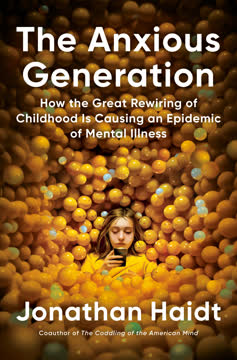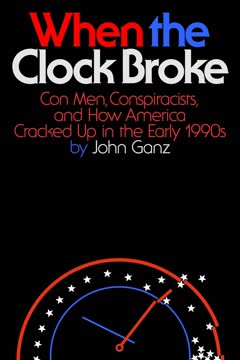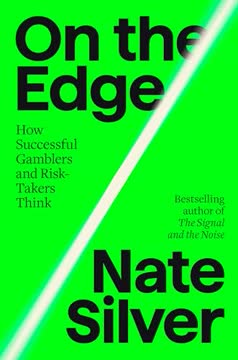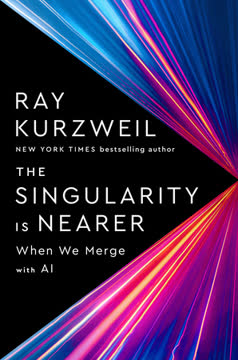重点摘要
1. “无宗教者”的崛起正在重塑美国的宗教格局
2018年,GSS数据显示,“无宗教者”在统计上已经与罗马天主教徒和福音派新教徒规模相当,简单预测表明,无宗教者可能在十年内成为美国最大的宗教群体。
宗教信仰的剧变。 自1972年以来,认同为无宗教的美国人比例从仅5%飙升至2018年的近25%。这种增长自1990年代初以来尤为迅速,如今“无宗教者”已与福音派新教徒和天主教徒并列为美国最大的宗教群体。
传统信仰的衰退。 随着无宗教者的增长,大多数其他宗教传统都在下降:
- 主流新教徒:从1970年代的30%降至2018年的10%
- 天主教徒:自2000年以来从27%降至23%
- 福音派新教徒:从1993年的30%降至2018年的21.5%
这种剧变正在重塑美国的文化、政治和社会动态,对美国宗教的未来产生深远影响。
2. 世俗化理论解释了宗教信仰的下降
根据这一简单模型,基于美国的经济繁荣,认为宗教非常重要的美国公民比例应低于5%。
教育和繁荣推动世俗化。 由社会学家如马克斯·韦伯提出的世俗化理论认为,随着社会变得更加教育化和经济繁荣,它们往往会远离宗教。这一模式在大多数发达的欧洲国家中清晰可见,那里的教堂出席率和宗教信仰急剧下降。
美国例外论受到挑战。 尽管美国经济发达,但长期以来一直是世俗化理论的例外,保持着高水平的宗教信仰。然而,最近的趋势表明,美国可能正在经历延迟的世俗化:
- 教育水平的提高与宗教脱离率的增加相关
- 年轻一代明显比老一代更不宗教
- 无宗教者的快速增长符合世俗化的预测
虽然美国仍比许多欧洲国家更宗教化,但数据表明它可能正在走向类似的、尽管是延迟的世俗化轨迹。
3. 社会期望偏差掩盖了真实的宗教脱离率
本质上,每周去教堂一次的人中有一半在撒谎。
宗教行为的过度报告。 社会期望偏差导致许多美国人在调查中夸大了他们的宗教参与。比较自我报告的教堂出席率与实际人数的研究揭示了显著的差异:
- 在一个县,35.8%的人声称每周出席,但实际上只有19.6%出席
- 全国调查可能高估了宗教参与率10-15个百分点
非宗教的污名减少。 随着社会规范的转变,人们在承认他们的真实宗教(或非宗教)状态时感到更加舒适:
- 老一代在调查中越来越多地认同为无宗教者
- 年轻人更有可能公开声称自己是非宗教的
这表明,无宗教者的崛起可能部分是由于对宗教脱离的诚实增加,而不仅仅是新脱教的结果。
4. 互联网和政治加速了无宗教者的增长
这种脱离的急剧增加至少部分是由于对保守福音派政治的反弹。
怀疑者的在线社区。 互联网为那些质疑信仰的人提供了找到志同道合者和获取挑战宗教信仰的信息的空间。这打破了以前孤立宗教怀疑者的“沉默螺旋”,特别是在保守社区中。
政治极化驱动脱离。 白人福音派基督教与保守共和党政治的强烈结合疏远了许多温和派和自由派:
- 1978年,50%的每周去教堂的白人是民主党人;今天,只有25%是
- 93%的白人新教徒参加的教会中,特朗普的支持率高于全国平均水平
- 自由派比保守派更有可能是无宗教者
这种政治-宗教融合使许多左倾人士在教会中感到不受欢迎,加速了他们的脱离。
5. 家庭结构的变化导致宗教脱离
广泛来看,半数无神论者和不可知论者以及超过45%的“无特别信仰者”尚未满四十岁。
生活里程碑的延迟影响宗教信仰。 传统上增加宗教参与的触发因素,如结婚和生育,正在许多美国人中发生得更晚或根本没有发生:
- 已婚成年人:1972年的74% vs. 2018年的42.5%
- 初婚平均年龄:1960年女性为20岁 vs. 2018年为28岁
家庭状态与信仰的关联。 数据显示家庭结构与宗教参与之间有明确的联系:
- 35%的未婚、无子女成年人是无宗教者
- 只有16%的已婚有子女成年人是无宗教者
随着更多美国人在30多岁和40多岁时仍然单身或无子女,他们不太可能回归宗教社区,导致无宗教者的增长。
6. 并非所有无宗教者都是一样的:无神论者、不可知论者和“无特别信仰者”
转换为实际数字——CCES表明,美国无宗教者比GSS多两千万。
多样的非宗教身份。 无宗教者可以大致分为三类:
- 无神论者(占人口的5.7%):坚决拒绝相信上帝
- 不可知论者(5.7%):对上帝的存在持不确定态度
- 无特别信仰者(19.9%):无宗教但不一定是非信徒
不同的人口特征。 这些群体在特征上有显著差异:
- 教育:44%的无神论者拥有学士学位 vs. 20%的无特别信仰者
- 性别:60%的无神论者是男性 vs. 50%的无特别信仰者
- 政治:无神论者最为自由派,无特别信仰者较为温和
理解这些区别对于准确评估宗教格局和制定有针对性的外展策略至关重要。
7. “无特别信仰者”是最大的传教领域
如果基督徒想要寻找并拯救失落的人,为什么他们中的一些人会特意疏远美国三分之一的人口?
对宗教最有接受度。 在无宗教者中,“无特别信仰者”显示出重新接触宗教的最大潜力:
- 35%的人表示宗教在他们的生活中有些或非常重要
- 20%的人至少每年参加一次教堂
- 在四年的研究期间,16.4%的人成为基督徒
增长最快的群体。 无特别信仰者在过去十年中增加了5.6个百分点,现在占美国人口的20%。
社会经济挑战。 这个群体面临显著的困难:
- 任何宗教群体中教育水平最低(24%拥有学士学位)
- 60%的人年收入低于5万美元
- 在政治和社会参与方面比其他无宗教者更少
教会若想逆转脱离趋势,应将努力集中在接触无特别信仰者上,他们可能最能从宗教社区的支持中受益。
8. 全球化和世俗化是不可阻挡的力量
试图通过对进口商品征收关税来阻止全球化,相当于试图通过在更多美国法院张贴十诫来阻止世俗化。
重塑社会的平行趋势。 全球化和世俗化都是无法轻易逆转的基本转变:
- 全球化:改变了制造业,导致工资停滞
- 世俗化:显著改变了宗教格局
徒劳的抵抗。 抵抗这些趋势的努力往往无效:
- 保护主义政策未能带回制造业工作
- 传统的宗教外展方法难以遏制脱离潮流
适应是关键。 与其对抗这些不可阻挡的力量,教会和社会必须学会在它们创造的新现实中航行。
9. 教会必须适应宗教脱离的新现实
如果基督徒想要寻找并拯救失落的人,为什么他们中的一些人会特意疏远美国三分之一的人口?
倾听脱离的故事。 教会需要了解人们离开的原因:
- 宗教机构内的虐待和创伤
- 因性取向或生活选择感到不受欢迎
- 智力上的怀疑未得到解决
去政治化宗教空间。 保守政治与基督教的强烈关联疏远了许多潜在的教会成员:
- 2008-2018年间,20个最大的白人新教教派中有16个变得更加共和党化
- 牧师在社交媒体上的政治化帖子阻碍了多样化的出席
关注“无特别信仰者”。 这个群体代表了重新接触宗教的最有希望的机会:
- 比无神论者或不可知论者更开放宗教观念
- 通常面临教会可以解决的社会经济挑战
- 构成了一个庞大且不断增长的人口群体
通过倾听、去政治化和有针对性的外展努力,教会可以更好地应对不断变化的宗教格局,并在日益世俗化的社会中保持相关性。
最后更新日期:
FAQ
What's "The Nones" about?
- Overview: "The Nones" by Ryan P. Burge explores the rise of the religiously unaffiliated in America, known as "nones," and examines their origins, characteristics, and future.
- Focus: The book provides a comprehensive analysis of the demographic, social, and political factors contributing to the growth of this group.
- Perspective: Burge combines his expertise as a sociologist and pastor to offer insights into how the nones are reshaping the American religious landscape.
- Structure: The book is structured to give both an aerial view of the trends and a detailed examination of the nones' demographics and beliefs.
Why should I read "The Nones"?
- Understanding Trends: It offers a deep dive into one of the fastest-growing demographics in America, providing valuable insights for anyone interested in religion, sociology, or cultural trends.
- Data-Driven Analysis: The book is grounded in robust statistical data, making it a reliable resource for understanding complex social changes.
- Practical Implications: For religious leaders and policymakers, it provides practical advice on how to engage with and address the needs of the nones.
- Broader Context: It situates the rise of the nones within larger societal shifts, such as secularization and political polarization.
What are the key takeaways of "The Nones"?
- Rapid Growth: The nones are now one of the largest religious groups in the U.S., with significant growth over the past few decades.
- Diverse Group: The nones are not monolithic; they include atheists, agnostics, and those who identify as "nothing in particular."
- Cultural Shifts: The rise of the nones is linked to broader cultural and political changes, including secularization and the internet's influence.
- Future Implications: Understanding the nones is crucial for religious institutions and society as they navigate future cultural and demographic shifts.
What are the best quotes from "The Nones" and what do they mean?
- "We move forward. It’s the only direction God gave us." This quote emphasizes the inevitability of change and the need to adapt to new realities.
- "Your world is not their world." This highlights the importance of understanding diverse perspectives and experiences, especially when engaging with the nones.
- "Seed that expresses the love and grace and hope of Jesus Christ is never truly lost." This suggests that efforts to reach out with compassion and understanding can have lasting impacts, even if immediate results aren't visible.
How does Ryan P. Burge define "nones" in "The Nones"?
- Definition: The nones are individuals who do not affiliate with any organized religion, including atheists, agnostics, and those who identify as "nothing in particular."
- Diversity: This group is diverse in beliefs and demographics, challenging the stereotype of nones as uniformly secular or anti-religious.
- Significance: They represent a significant and growing portion of the American population, influencing cultural and political landscapes.
- Complexity: The book emphasizes that nones are not a monolithic group, and understanding their nuances is crucial for engaging with them effectively.
What are the main reasons for the rise of the nones according to "The Nones"?
- Secularization: As societies become more educated and economically prosperous, they tend to move away from organized religion.
- Political Polarization: The alignment of religious groups with political parties has alienated some individuals, leading them to disaffiliate.
- Internet Influence: The internet has provided a platform for diverse beliefs and communities, making it easier for individuals to explore non-religious identities.
- Cultural Shifts: Broader cultural changes, including changing family structures and social norms, have contributed to the rise of the nones.
How does "The Nones" address the impact of politics on religious disaffiliation?
- Political Alignment: The book discusses how the close alignment of certain religious groups with political parties has driven some individuals away from organized religion.
- Partisan Divide: It highlights the growing partisan divide within religious communities, with many nones identifying as politically liberal.
- Cultural Backlash: The rise of the religious right and its political influence is seen as a factor in the increasing number of nones.
- Endogeneity: The book explores the complex relationship between politics and religion, questioning whether political beliefs influence religious affiliation or vice versa.
What demographic trends are highlighted in "The Nones"?
- Age: Younger generations are more likely to identify as nones, with millennials showing the highest rates of disaffiliation.
- Education: Higher levels of education are associated with higher rates of disaffiliation, although this trend varies by generation.
- Gender: Men are more likely to be nones than women, although the gap is narrowing among younger generations.
- Race: The book notes significant racial differences, with white and Asian Americans more likely to be nones compared to Black and Hispanic Americans.
How does "The Nones" categorize the different types of nones?
- Atheists: Individuals who do not believe in God and often hold strong anti-religious views.
- Agnostics: Those who are uncertain about the existence of God and often adopt a more open-minded stance.
- Nothing in Particular: A diverse group that does not identify with any specific religious or non-religious label, often less engaged in religious or political activities.
- Conversion Rates: The book discusses how these groups differ in their likelihood of converting to a religious tradition, with nothing in particulars being the most open to change.
What advice does "The Nones" offer to religious leaders?
- Understand the Nones: Religious leaders are encouraged to understand the diverse backgrounds and beliefs of the nones to engage with them effectively.
- Avoid Political Alienation: The book advises against aligning too closely with political ideologies that may alienate potential members.
- Focus on Community: Emphasizing community and social support can attract those who are disaffiliated but still seek connection and meaning.
- Adapt to Change: Leaders are urged to adapt to cultural and demographic shifts, recognizing that traditional methods may no longer be effective.
How does "The Nones" suggest addressing the spiritual needs of the nones?
- Listening: The book emphasizes the importance of listening to the stories and experiences of the nones to understand their perspectives.
- Inclusivity: Creating inclusive environments that welcome diverse beliefs and backgrounds can help engage the nones.
- Community Engagement: Fostering a sense of community and belonging can address the social and spiritual needs of the nones.
- Focus on Values: Emphasizing shared values and common goals, rather than doctrinal differences, can bridge gaps between religious and non-religious individuals.
What future trends does "The Nones" predict for American religion?
- Continued Growth: The nones are expected to continue growing, potentially becoming the largest religious group in the U.S. within a decade.
- Cultural Influence: As their numbers increase, the nones will have a significant impact on cultural and political landscapes.
- Diverse Beliefs: The diversity within the nones will continue to challenge traditional religious institutions to adapt and evolve.
- Potential for Change: While the rise of the nones presents challenges, it also offers opportunities for religious communities to innovate and engage with new audiences.
评论
《无宗教者》获得了褒贬不一的评价,其对美国宗教人口统计的分析得到了赞赏。读者们欣赏伯奇对宗教无关者增长数据的清晰呈现。一些人批评作者作为牧师的偏见以及他对“无宗教者”进行福音传播的建议。该书因其对“无宗教者”类别内多样性的见解而受到关注,包括无神论者、不可知论者和“无特别信仰者”。评论者认为数据具有说服力,但对伯奇应对宗教衰退的建议效果存在分歧。
Similar Books














